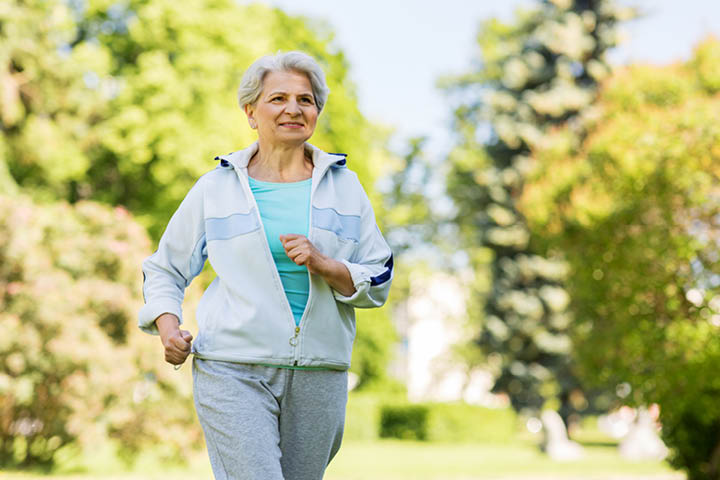by Kayla Bachand, MSN, AGNP-C
Most people will experience joint pain and inflammation at some point in their lives. Joint pain and osteoarthritis, which occurs when the cartilage between bones deteriorates causing less cushion in the joint, can significantly impact a person’s daily life. Both can make it increasingly hard to walk, bend or find a comfortable position to rest — especially considering it commonly affects the joints that are needed for mobility: knees, hips and spine.
There are several ways you can reduce and control joint pain, so you can get back to a more normal standard of living. It may not go away permanently, but any improvement is likely to make a considerable difference in your everyday life.

Here are 7 helpful tips to reduce and alleviate joint pain:
1. Diet
Many of the foods we consume increase the amount of inflammation in our body and joints. By decreasing consumption of certain foods, you can help ease symptoms of joint pain. Reduce your intake of processed foods, gluten, alcohol and fast food. Loading up on healthy, fresh foods when grocery shopping is a good way to limit your intake of foods that could increase joint pain. Consider starting an anti-inflammatory diet; it can be a great start to learning more about how food impacts our body.
2. Weight Loss
Losing weight can greatly decrease joint pain and even slow the progression of osteoarthritis. Reducing your weight by even 10 percent can have a huge impact on functionality and pain management. Combining an anti-inflammatory diet with portion control will give you a head start in managing your weight and helping reduce symptoms in your joints. It’s also important to not categorize foods as “good” or “bad,” but rather to think about food from a moderation perspective. Approaching food and weight loss from an incremental and moderation mindset decreases overwhelming feelings while positively impacting your long-term success.
3. Exercise
Start a workout routine to help build muscles and decrease joint pain by getting your body used to movement and exercise. Start out with easy, slow, 20-minute workouts three times a week. Aerobic, resistance, flexibility and range of motion trainings are good, practical types of exercises. You may also consider a lower impact activity, like walking or swimming, that can have a variety of positive benefits. It’s important to warm up and cool down each time you work out. Failing to do so can hurt your joints and muscles and could cause more pain or serious injury.
4. Supplements
Supplements can help reduce inflammation. You should always talk with your health care provider before incorporating supplements into your diet. Your provider can recommend the best amount for your specific health situation. Below is a general guideline for helpful anti-inflammatory supplements:
- Omega-3 (fish oil) – 3,000-4,000 milligrams daily. Store this in your freezer to help reduce the fishy taste.
- Turmeric – 1,000 milligrams daily (equivalent to ½ teaspoon). Take this with pepper to help your body absorb the nutrients. You can also mix ½ teaspoon of turmeric in a ginger tea. It may take a few days to feel any improvements in your symptoms.
- Glucosamine sulfate (GS) – 500 milligrams three times a day and Chondroitin sulfate (CS) – 400 milligrams three times a day for a minimum of six weeks. Manufacturers will often combine these two into one pill or tea.
5. Over-the-counter Creams
Several creams and gels can help relieve inflammation and pain. Gels are generally more suited to help with joints because they work directly where they’re applied to your skin instead of being absorbed into your whole system.
- Diclofenac (Voltaren) gel can be applied to your joints up to four times per day. It helps reduce inflammation and pain and works best for joints in your hands and knees.
- Capsaicin cream can also be applied directly to your joints to reduce pain and inflammation. It needs to be applied daily to achieve the best results. Since this cream comes from chili peppers, apply it while wearing gloves or thoroughly wash your hands after application.
- Aspercreme and Bengay can also help.
6. Temperature
Our muscles can react differently to varying temperatures. Heat can help relax tight muscles; a moist heat is best for pain relief. Cold can be used after extreme exercise to help relieve any aches that you may be experiencing.
7. Other Alternatives
- Acupuncture
- TENS unit
- Massage
Debilitating pain can leave you unable to move or enjoy simple everyday activities. It can sometimes feel that there are no ways to get back to your normal way of life. Incorporating new habits of eating better or exercising can take time, but you can use each of these tips interchangeably and use them to meet your pain management needs where you’re at. As the pain dissipates, you can adjust your routines and strategies or even try out new tactics that were previously impossible for you to try out. Joint pain and inflammation don’t have to leave you unable to enjoy life. You can empower yourself and reclaim your health by implementing the simple tips above.
If you or your loved one lives with a chronic illness, House Calls may be able to help. House Calls brings primary care to your front door for individuals who have difficulty leaving their homes for routine medical appointments. Contact us today to learn more.
Kayla Bachand is a certified adult-gerontology nurse practitioner with House Calls.



